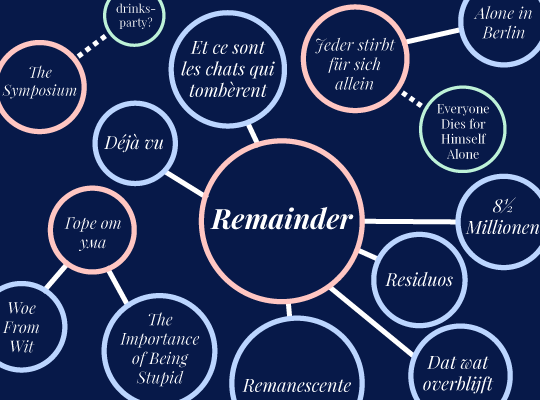“What do I call it though?” My friend was quick with her response: “What about Déjà Vu?” “Yeah, that would make a great title,” I sighed, “but it’s already been used for an Italian edition. That would be plagiarism.” The book we were trying to christen was Remainder, by Tom McCarthy. Having translated the novel into Russian on spec, I had just heard from Ad Marginem, a Moscow-based publisher: they liked it and wanted to publish it; I went over the text and was happy with it; the only thing missing was a decent title. “Остаток”, the Russian word for “remainder”, wouldn’t do: although it captured the main meaning—what remains, is left over or still to come—it sounded feebler than the original, didn’t have the same ring to it.
When you are about to start translating a piece of writing, even a straightforward one, like a bus timetable, you may be excused for not having a working title in mind, but when you get to the end you are reasonably expected to have come up with some idea. You should know by then what the original title is meant to reflect: the contents of the book, the zeitgeist, practicalities of publishing, the author’s stance or something else. As a translator, you should also realise that your task is not to translate the title into a different language, but into a different culture that, apart from its linguistic aspect, has many other dimensions. This applies not just to the title, of course, but also to the entire work, be it an avant-garde novel or a pudding recipe, a love poem or a price list. READ MORE…

